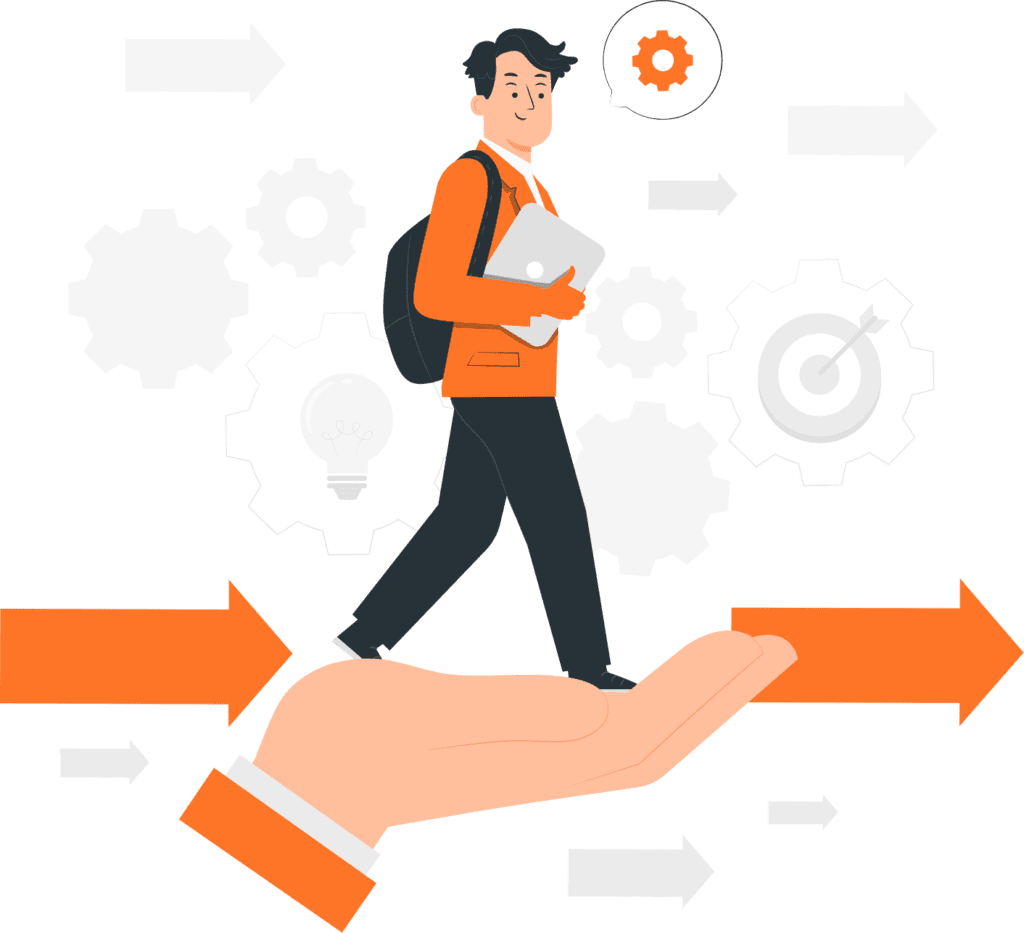
About Us
SOFTMENT was established by a team of experienced software engineers and developers. As a startup, we began by providing custom software development services to small and medium-sized businesses in United States of America. However, through word-of-mouth and referrals from satisfied clients, we quickly expanded our clientele internationally.
Today, SOFTMENT has grown into a full-scale IT solutions provider serving dozens of clients worldwide. Our headquarters and development centers are located in Delaware, the technology hub of United States of America. From here, our teams use cutting-edge technologies to deliver innovative solutions tailored to each client’s unique needs and goals.

Engagement Models
Dedicated Resource Model
In this model, our software development agency provides you with dedicated infrastructure and dedicated software development teams who work exclusively on your project. Choose this model if you want total control of development processes and don’t want to get into a fuss about hiring employees.
Fixed Time & Fixed Price
Under this low-risk model, our offshore software development company in United States of America works with clients to define expected deliverables and timelines to determine a mutually agreed fixed price. Choose this model if your requirements will likely stay the same and project duration can be determined. To make your solution more secure and scalable than before.
Work Ethics
Growth is the critical element reflected in our actions and decisions. It defines the core set for our team, empowering and enabling us to solve even the most challenging problems.
Android App Development
iOS App Development
Flutter App Development
Team
We’re a passionate team of application makers who breathe, drink, eat, play, think, talk, and design and code the apps. Our passion for work reflects our values and produces a delightful experience for our clients. We delivered 1500+ apps in various industries and 40+ countries worldwide.
At SOFTMENT, we are committed to being more than just a software vendor to our clients. We aim to become a true technology partner that deeply understands their business challenges and objectives. To achieve this, we take a consultative approach focused on collaboration, transparency, and trust.
When partnering with new clients, we start by thoroughly evaluating their existing systems, processes, and pain points. Next, our experts provide recommendations on how to optimize operations or tackle issues through strategic IT initiatives. By gaining a holistic view, we are able to develop IT roadmaps and custom solutions that provide both immediate and long-term value. Throughout all projects, we maintain continuous communication to ensure seamless collaboration. Our project managers provide progress reports, arrange calls and meetings, and address any questions or concerns that arise. This allows us to meet milestones, deliver exceptional results, and exceed customer expectations.

Welcome to the Director's corner
You'll find insights, strategies, and perspectives straight from the desk of our esteemed Director. Discover how our visionary leadership is shaping the future, driving innovation, and fostering excellence in every aspect of our organization.
Our Services
Web Development
Custom web apps, ecommerce platforms, intranets/extranets, web portals
Most Feasible Development Process
Our process is the most practical & efficient an app development project can have.
Commonly Asked Questions
As a software development company, our aim is to build software or software applications that include identifying a need, designing the software, coding it and testing for the issues.
Software Development Life Cycle is the foundation of all software development methodologies that include different activities like estimated budget, requirement gathering, documentation writing, design and development, testing, deployment and maintenance. It comprises of seven different phases:
- Planning
- Analysis
- Design
- Development
- Testing
- Deployment
- Support and Maintenance
Planning In the planning stage, a team of developers determines project goals and a high-level plan is created for the intended project. It is the most fundamental phase that primarily involves three activities:
- Feasibility Assessment
- Project Plan Creation
- System Identification for Development
Analysis In this phase, the software development team and client analyse the end-user business requirements and converts project goals into a system that the organisation wants to build. Analysis phase consists of the following three activities:
- Implementing a Detailed Analysis
- Collecting Business Requirements
- Designing Process Diagrams
Design Desired features and functionalities of a software application are described in the design phase. This stage of SDLC includes business rules, screen layouts, pseudo-code and other documentation defining the components of the software. The design phase usually comprises the following activities:
- IT Infrastructure Designing
- System Model Designs
- Technical Designs
- User Interfaces
- Marvel Prototype
Development In the development phase, all the previous phases are converted into the actual working system. Developers develop the code and backend of a software application. Development phase involves two primary activities:
- IT Infrastructure Development
- Code and Database Development
Testing In the testing phase of SDLC, all the code pieces are integrated and hosted in the testing environment. Testers check the system for bugs, defects and errors to test the system’s functionalities. Testing phase involves:
- Test Cases Creation
- Test Cases Execution
Deployment In this phase, the system is brought to the real-life environment where the user starts operating the system. The deployment phase involves placing all data and components in the production environment. This stage of SDLC is also referred to as delivery. Support and Maintenance In the Support and Maintenance phase, corrections, changes and enhancements can be made to ensure that the system will work after the updates and meet the business goals. It is essential to maintain and upgrade the software from time to time so that it runs seamlessly in the future. It involves the following activities:
- Supporting the system users
- Maintenance of the system
- System upgrades
Software Development Life Cycle is the foundation of all software development methodologies that include different activities like estimated budget, requirement gathering, documentation writing, design and development, testing, deployment and maintenance. It comprises of seven different phases:
- Planning
- Analysis
- Design
- Development
- Testing
- Deployment
- Support and Maintenance
Planning In the planning stage, a team of developers determines project goals and a high-level plan is created for the intended project. It is the most fundamental phase that primarily involves three activities:
- Feasibility Assessment
- Project Plan Creation
- System Identification for Development
Analysis In this phase, the software development team and client analyse the end-user business requirements and converts project goals into a system that the organisation wants to build. Analysis phase consists of the following three activities:
- Implementing a Detailed Analysis
- Collecting Business Requirements
- Designing Process Diagrams
Design Desired features and functionalities of a software application are described in the design phase. This stage of SDLC includes business rules, screen layouts, pseudo-code and other documentation defining the components of the software. The design phase usually comprises the following activities:
- IT Infrastructure Designing
- System Model Designs
- Technical Designs
- User Interfaces
- Marvel Prototype
Development In the development phase, all the previous phases are converted into the actual working system. Developers develop the code and backend of a software application. Development phase involves two primary activities:
- IT Infrastructure Development
- Code and Database Development
Testing In the testing phase of SDLC, all the code pieces are integrated and hosted in the testing environment. Testers check the system for bugs, defects and errors to test the system’s functionalities. Testing phase involves:
- Test Cases Creation
- Test Cases Execution
Deployment In this phase, the system is brought to the real-life environment where the user starts operating the system. The deployment phase involves placing all data and components in the production environment. This stage of SDLC is also referred to as delivery. Support and Maintenance In the Support and Maintenance phase, corrections, changes and enhancements can be made to ensure that the system will work after the updates and meet the business goals. It is essential to maintain and upgrade the software from time to time so that it runs seamlessly in the future. It involves the following activities:
- Supporting the system users
- Maintenance of the system
- System upgrades






